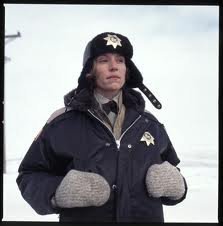
Middle Ages
In China as well as France, the first people to perform dentistry were barbers. They have been categorized into 2 distinct groups: guild of barbers and lay barbers. The first group, the Guild of Barbers, was created to distinguish more educated and qualified dental surgeons from lay barbers. Guild barbers were trained to do complex surgeries. The second group, the lay barbers, were qualified to perform regular hygienic services such as shaving and tooth extraction as well as basic surgery. However, in 1400, France made decrees prohibiting lay barbers from practicing all types of surgery. In Germany as well as France from 1530 to 1575 publications completely devoted to dentistry were being published. Ambroise Paré, often known as the Father of Surgery, published his own work about the proper maintenance and treatment of teeth. Ambroise Paré was a French barber surgeon who performed dental care for multiple French monarchs. He is often credited with having raised the status of barber surgeons.
Modern dentistry
Pierre Fauchard of France is often referred to as the "father of modern dentistry" for being the first to publish a scientific textbook (1728) on the techniques and practices of dentistry. Over time, trained dentists immigrated from Europe to the Americas to practice dentistry, and by 1760, America had its own native born practicing dentists. Newspapers were used at the time to advertise and promote dental services. In America from 1768 to 1770 the first application of dentistry to verify forensic cases was being pioneered; this was called forensic dentistry. With the rise of dentists there was also the rise of new methods to improve the quality of dentistry. These new methods included the spinning wheel to rotate a drill and chairs made specifically for dental patients.
In the 1840s the world's first dental school and national dental organization were established. Along with the first dental school came the establishment of the Doctor of Dental Surgery degree, often referred to as a DDS degree. In response to the rise in new dentists as well as dentistry techniques, the first dental practice act was established to regulate dentistry. In the United States, the First Dental Practice Act required dentists to pass each specific states medical board exam in order to practice dentistry in that particular state. However, because the dental act was rarely enforced, some dentists did not obey the act. From 1846 to 1855 new dental techniques were being invented such as the use of ester anesthesia for surgery, and the cohesive gold foil method which enabled gold to be applied to a cavity. The American Dental Association was established in 1859 after a meeting with 26 dentists. Around 1867, the first university associated dental school was established, Harvard Dental School. Lucy Hobbs Taylor was the first woman to earn a dental degree.
In the 1880s, tube toothpaste was created which replaced the original forms of powder or liquid toothpaste. New dental boards, such as the National Association of Dental Examiners, were created to establish standards and uniformity among dentists. In 1887 the first dental laboratory was established; dental laboratories are used to create dentures and crowns that are specific to each patient.[5] In 1895 the dental X-ray was discovered by a German physicist, Wilhelm Röntgen.
In the 20th century, new dental techniques and technology were invented such as: the porcelain crowns (1903), Novocain (a local anesthetic) 1905, precision cast fillings (1907), nylon toothbrushes (1938), water fluoridation (1945), fluoride toothpaste (1950), air driven dental tools (1957), lasers (1960), electric toothbrushes (1960), and home tooth bleaching kits (1989) were invented. Inventions such as the air driven dental tools ushered in a new high-speed dentistry.
If you want to read a lot more about dentists, go here:
https://en.wikipedia.org/wiki/Dentist
Tired of serving chicken breasts the same ol' way every time? If so, then you'll love this recipe for Cheesy Baked Chicken. These chicken breasts have a cracker crumb coating made from crushed cheese crackers and sesame seeds, so you can expect lots of crunch and flavor in every bite. Plus, this one is done in just about 30 minutes, which makes it great for busy weeknights!
- 1 cup finely crushed cheese crackers
- 2 tablespoons sesame seeds
- 1 teaspoon chopped fresh parsley
- 1/2 teaspoon salt
- 1/4 teaspoon black pepper
- 4 boneless, skinless chicken breasts
- 1/2 cup butter, melted
- Preheat oven to 350º. Coat a baking sheet with cooking spray.
- In a shallow bowl, combine cracker crumbs, sesame seeds, parsley, salt, and black pepper. Place butter in another shallow dish. Dip chicken in butter, then dip in cracker-crumb mixture, coating evenly on both sides. Place chicken on baking sheet.
- Bake 20 to 25 minutes or until no pink remains in center and chicken is golden.







